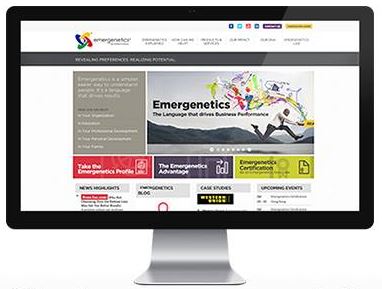
Our company just completed a website rollout where we completely reworked and redesigned www.emergenetics.com. It is a huge accomplishment for Emergenetics International globally. Even with websites becoming more and more streamlined, this is a big deal for any company, from a sole proprietor starting out to a growing company like ours to a global Fortune 500 company. Your website is your primary communication engine. It needs to tell your story, communicate your value and engage your audiences. All the time.
Because we are in the business of people, we have a unique take on how a project of this magnitude comes to fruition. Just for background, our company is global, our tools are translated into many languages, our audiences are diverse and varied, and our IP is our lifeline, so security is a huge issue.
But back to the unique perspective we have on a website rollout, I think any company can use this approach. Our website rollout was a mixture of different thinking and behavioral styles all meshed together to ensure that our messaging was right, our visual look was resonant, our site made sense…and last but certainly not least…the site actually worked.
What did we do in our approach that you could use in your own work? Here’s 5 key things to remember:
- Know your audience – Target Markets: The website must be built for the people you want to attract. Therefore you need to know what they care about and how they consume information. We utilized a Social and Expressive approach to finding this out. We had teams of people in our marketing department send surveys, conduct interviews, prototype and just simply relate to and speak with our core audiences to get a sense of what they wanted.
- Know where you’re going – Branding: From a big picture standpoint, this means being on brand. Who are you as an organization? Your website needs to match that— everything from your imagery to your language to your brand standards and characteristics. This is your megaphone so it better be the epitome of your brand. We employed a Conceptual framework to envision what the company is all about and how that related into all elements of the site, from our values and people to our products and services.
- Know how to get there – Sitemap: Knowing what your brand is and who you want to reach means you can actually develop a sitemap that conveys this information as clearly as possible. We have brilliant people on our development and design team that have preferences in Structural thinking and tend towards a firm viewpoint on the Flexibility scale. These folks were invaluable in clarifying the vision to create a site that is usable, easy-to-navigate and accomplishes what we want users to experience.
- Know what to say – Communications and Social Media: Creating a great website doesn’t happen in a vacuum. It is part of a larger communications platform and part of a bigger marketing initiative. We employed an Analytical approach across the Assertiveness spectrum to be clear about when the site would be finished and how things were driving forward. When you involve your stakeholders (as you should) in the process, you need to be accountable. Although we didn’t always make deadlines, we explained the reasoning why and what lessons we learned in order to improve. We clarified how things were driving forward and what that means for timeframe.
- Know what you want to measure – Metrics and Post-Launch: In this day and age, a website is never simply launched. It’s a living, breathing part of your organization. And that means, like an employee or a product, you must expect it to perform. We had a global WEteam (a cognitively diverse team that brings in all perspectives) come up with what we want the website to do. This means metrics around sales and leads (Analytical), engagement and sharing (Social), corporate social responsibility (Conceptual) and web performance and optimization (Structural).
There’s countless technical elements that go into a website but thinking through how you develop a site from the perspective of who is on your team and how they can best contribute… and taking into account these key factors, you’ll be set up to focus on a lot of the things that matter most.
 Print This Post
Print This Post
